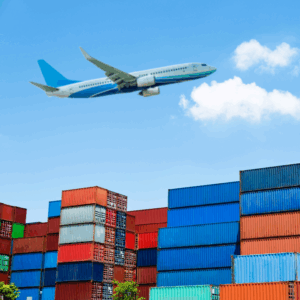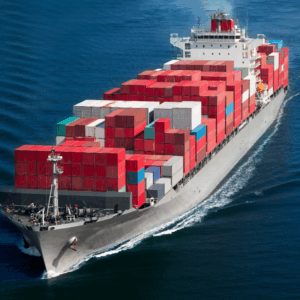 In the complex landscape of international trade, air freight delivery services have evolved from being merely an option for urgent shipments to a strategic component of global logistics chains. According to the report “The Development of International Air Freight“, this evolution responds to increasingly specialized demand: perishable goods, pharmaceuticals, industrial spare parts, and e-commerce require operational precision, traceability, and minimal response times. The air freight mode of transport satisfies these requirements thanks to its ability to connect logistics hubs and international markets with high efficiency. In this article, we delve deeply into operational attributes, service quality gaps, and strategic collaboration models employed by forwarders, logistics operators, and airlines in the context of international air cargo transport.
In the complex landscape of international trade, air freight delivery services have evolved from being merely an option for urgent shipments to a strategic component of global logistics chains. According to the report “The Development of International Air Freight“, this evolution responds to increasingly specialized demand: perishable goods, pharmaceuticals, industrial spare parts, and e-commerce require operational precision, traceability, and minimal response times. The air freight mode of transport satisfies these requirements thanks to its ability to connect logistics hubs and international markets with high efficiency. In this article, we delve deeply into operational attributes, service quality gaps, and strategic collaboration models employed by forwarders, logistics operators, and airlines in the context of international air cargo transport.
The Strategic Value of Air Freight Services
International air freight services are renowned for their high reliability, speed, and global coverage; however, behind the scenes, numerous specialized processes are at work. As documented in the study “Service Quality Evaluation of International Freight Forwarders”, service quality cannot be measured solely by punctuality; factors like credibility, effective communication, and responsiveness are key. According to Grönroos (1984), customer perception depends on both the quality of the process (how the service is delivered) and the quality of the outcome (final fulfillment). In this context, air freight involves much more than speed; it includes regulatory compliance, careful handling of ULDs (unit load devices), real-time traceability, and continuous shipment status updates. This multidimensional view is crucial for understanding how value is created in air cargo transportation.
Integrators vs Non-Integrators: Two Air Freight Models
In the air freight shipping market, two fundamental structures coexist: integrators and non-integrators. As indicated in “The Development of International Air Freight“, integrators (DHL, FedEx, UPS) control the entire logistics chain from origin to destination, allowing them to offer instant air freight rates and minimize errors through standardized processes. In contrast, the non-integrated model involves multiple actors: airlines, air freight forwarders, ground operators, and customs. This system offers more flexibility but is also more prone to coordination issues; these structural differences impact costs (such as air freight rates), delivery times, and customer experience. For example, integrators can minimize Gap 1 of the GAP model—the discrepancy between customer expectations and provider perception—while non-integrators heavily depend on the operational synergy among various logistics entities.
IATA Operational Standards and Process Control
Operational efficiency in air freight transport relies on strict compliance with international standards, such as those defined by IATA. The Cargo Operations manual, the IATA Cargo Handling Manual, and the IATA Temperature Control Regulations define criteria such as Ready for Carriage (RFC), IMP codes, ULD build-up practices, and digitalization via CIMP/ONE Record. According to the document “Service by Air Freight”, adopting these standards reduces service variability, ensures regulatory compliance (TAPA, C-TPAT), and improves acceptance times. Airlines that integrate these processes achieve greater cargo handling efficiency, reduce ground errors, and enhance customer experience through transparency and traceability. Here, efficiency is non-negotiable—it’s the central axis of the air freight value proposition.
Digitalization and ONE Record: The New Operating Standard
The future of air cargo shipping lies in complete digitalization. IATA promotes the use of ONE Record as the universal standard for consolidating all shipment data into a single, structured dataset. This initiative allows API integration with freight forwarders, airlines, and customs authorities. According to the report “Service Quality Evaluation of International Freight Forwarders”, this digitalization not only improves real-time visibility but also facilitates planning, reduces documentation errors, and speeds up clearance. Complementarily, IATA’s CEIV programs—for pharmaceuticals, perishables, and live animals—highlight how each air cargo category requires specialized competencies, from staff training to temperature and humidity control. Thus, digital transformation is not merely technological—it is a process revolution that impacts the final quality of air freight services.
Express Services in Europe: Strategic Comparison
The Express Delivery report outlines the structure of the express delivery market (air freight delivery services) in Europe, revealing significant differences between countries. In the UK, the market is driven by e-commerce and B2B, with high demand for 24-hour deliveries. Germany stands out for its intra-European logistics corridors, where hubs are efficiently connected by air and road. In contrast, Spain and France face significant challenges in their last-mile infrastructure and the fragmentation of services outside metropolitan areas. The implementation of low-emission zones and fleet electrification also impacts operations. This logistics diversity means that choosing the right air freight delivery partner requires not only competitive air freight quotes but also a deep understanding of the local logistics ecosystem. Success in Europe depends not only on air transport but also on its integration with ground networks, customs regulations, and urban policies.
Air Freight Pricing Structures and Elasticity
International cargo rates are not fixed; they vary due to many factors. According to “The Development of International Air Freight” and “Service Quality Evaluation of International Freight Forwarders”, rates can be classified as GCR (General Commodity Rates), SCR (Specific Commodity Rates), container rates, or contract rates. Factors such as urgency, seasonality, fuel surcharges, and belly cargo capacity influence pricing. The report indicates that shippers value predictable contract rates, while forwarders utilize spot prices to increase their margins. Elasticity also varies by cargo type: perishables, pharmaceuticals, industrial parts, and tech products are especially sensitive to delays, increasing their willingness to pay for premium services. In this scenario, an online air freight quote should reflect not only weight and volume, but also the nature of the cargo, perceived risk, and total logistics impact.

The GAP Model of service quality, developed by Parasuraman, Zeithaml, and Berry, is a fundamental analytical tool used to diagnose discrepancies between what customers expect and what logistics providers deliver. In the context of international air freight, these gaps are critical, as misalignment between expectations and execution can significantly impact customer retention, service reputation, and operational efficiency. The study Service Quality Evaluation of International Freight Forwarders applies this model to the global air cargo industry, identifying five key gaps that disrupt service alignment and value perception:
Gap 1 – Gap Between Customer Expectations and Provider Perception
This first gap emerges when air freight operators misunderstand what their clients truly prioritize. While freight forwarders and carriers often emphasize security, regulatory compliance, or on-time uplift, shippers may be more concerned with shipment visibility, speed of communication, and proactive status updates. For instance, in premium trade lanes such as air freight from Germany or air freight to the UK, clients expect complete shipment transparency and consistency. If the logistics provider fails to recognize the importance of these aspects, it may invest resources in areas that the client considers non-critical, thereby weakening overall service satisfaction.
Gap 2 – Gap Between Provider Perception and Service Specification
Even if a logistics provider correctly interprets what the customer wants, this gap arises when those insights fail to be codified into formal service standards or operational protocols. In air freight, this might mean not incorporating expectations for temperature-controlled handling, milestone-based tracking, or digital documentation into service-level agreements or internal procedures. This gap becomes more prominent in complex international air freight services, where coordination among carriers, customs, ground handlers, and forwarders is essential. Failure to translate market expectations into executable standards often leads to inconsistent delivery, particularly in high-risk corridors involving air freight from the UK or compliance-intensive routes, such as air freight to Germany.
Gap 3 – Gap Between Service Specifications and Actual Service Delivery
This gap refers to the failure to implement established procedures, despite having precise service specifications in place. In the air cargo industry, this could result from staff training deficiencies, system incompatibilities, or breakdowns in intermodal coordination. For example, even when a company commits to 24-hour delivery and tracks milestones through ONE Record or CIMP data exchanges, a shipment of air cargo from the USA might be delayed due to incomplete paperwork, misrouted cargo, or non-compliance with carrier “Ready for Carriage” (RFC) protocols. This operational breakdown directly impacts delivery performance and erodes customer trust, particularly in time-critical industries such as pharmaceuticals or automotive parts.
Gap 4 – Gap Between Service Delivery and External Communication
One of the most damaging gaps is the discrepancy between the service promised and the service delivered. Providers may advertise offers such as “air freight instant rates,” “guaranteed delivery,” or “real-time tracking”, yet fail to execute them consistently. If promotional language and SLAs are not tightly aligned with actual capabilities, the customer perceives the company as unreliable or even deceptive. This is particularly problematic in markets with stringent performance benchmarks, such as air freight to Germany or international compliance-sensitive lanes, where reputational damage can lead to contract loss and regulatory scrutiny.
Gap 5 – Gap Between Customer Perception and Actual Satisfaction
Even when the technical service is delivered correctly, on time, within budget, and compliant, the customer may still feel dissatisfied if soft elements of the experience are neglected. These include personalized communication, problem resolution agility, empathy, and post-shipment support. The study reveals that shippers often prioritize transparency, interpersonal communication, and responsiveness more than providers typically assume. In the air freight shipping environment, especially for SMEs or high-touch clients, the absence of these factors reduces the perceived value. Customers may not renew contracts or may shift to competitors that offer a more tailored service experience, even if the latter’s technical KPIs are similar.
AeroLogic Case Study: Strategic Air Freight Cooperation
The alliance between DHL Express and Lufthansa Cargo, formalized in the joint airline AeroLogic, represents a successful model of co-opetition—cooperation between competitors. According to the study “Cooperating to Compete in the Global Air Cargo Industry”, this alliance enabled expanded long-haul capacity, avoidance of duplicate routes, and shared maintenance and airport handling resources. AeroLogic optimizes intercontinental night flights, improving fleet utilization and reducing stopover costs. Moreover, its model combines the flexibility of express with the capacity of air freight, offering benefits to both urgent and consolidated cargo customers. This type of strategic collaboration redefines traditional competition in the global air freight market. By maximizing operational and network synergies, models like AeroLogic represent the future of the industry: a more integrated, efficient, and resilient air logistics sector.
Conclusion: Innovation, Coordination, and Quality in Air Freight Services
Air freight delivery services represent a critical link in global logistics. However, as explored throughout this analysis, their effectiveness goes beyond speed. True differentiation arises from operational excellence, compliance with international standards such as those set by IATA, digitalization through initiatives like ONE Record, and the ability to respond precisely to the specific demands of sectors like pharmaceuticals, e-commerce, and perishables.
Through strategic models—such as logistics integrators or operational alliances like AeroLogic—and continuous service quality assessment from both the forwarder’s and the shipper’s perspectives, companies can enhance their competitive positioning. A deep understanding of the local and international logistics ecosystem is essential for selecting the correct routes, air cargo rates, transportation partners, and digital integration methods.
International air freight services are an evolving platform. Incorporating tools such as instant freight quotes, digital traceability, ongoing staff training, and collaboration among supply chain stakeholders is essential to ensure that shipments not only arrive on time but also meet the quality levels expected by the market. By adopting these practices, operational friction is reduced, and a more efficient, secure, and resilient global logistics framework is established.

Do you need to move urgent or specialized cargo? Explore our international air freight shipping options and receive an immediate, reliable quote with no hidden fees or surprises. Click here and start today with ExFreight.
Frequently Asked Questions (FAQ)
What does an air freight quote include?
The quote includes the main freight charge and origin-related costs. For DOOR-TO-DOOR services, it also provides destination terminal fees, local transportation, and final delivery. In DOOR TO PORT services, the consignee is responsible for covering destination charges.
What is the difference between air freight and express parcel services?
Air freight handles palletized goods and utilizes dock-level trucks, which have higher liability limits. Express parcel services use vans, handle loose boxes, and are more cost-effective for small shipments, although they offer lower insurance coverage.
When is the “Ready for Carriage” (RFC) status applied?
RFC status indicates that the shipment meets all operational and documentary requirements for acceptance in transport. It is verified at the acceptance point by IATA standards.
What international regulations apply to air freight transport?
The Montreal Convention, C-TPAT security guidelines, TAPA regulations, and IATA standards are mandatory for regulatory compliance by all logistics operators and airlines involved in international cargo transportation.
What insurance applies if I don’t declare the value of my cargo?
Standard limited liability applies, for instance, 17 SDR/kg under the Montreal Convention for air cargo. If the value is not declared and no additional coverage is purchased, compensation will be minimal.
Get your instant air freight quote now with ExFreight—reliable, traceable, and tailored to your global shipping needs.






Leave A Comment
You must be logged in to post a comment.